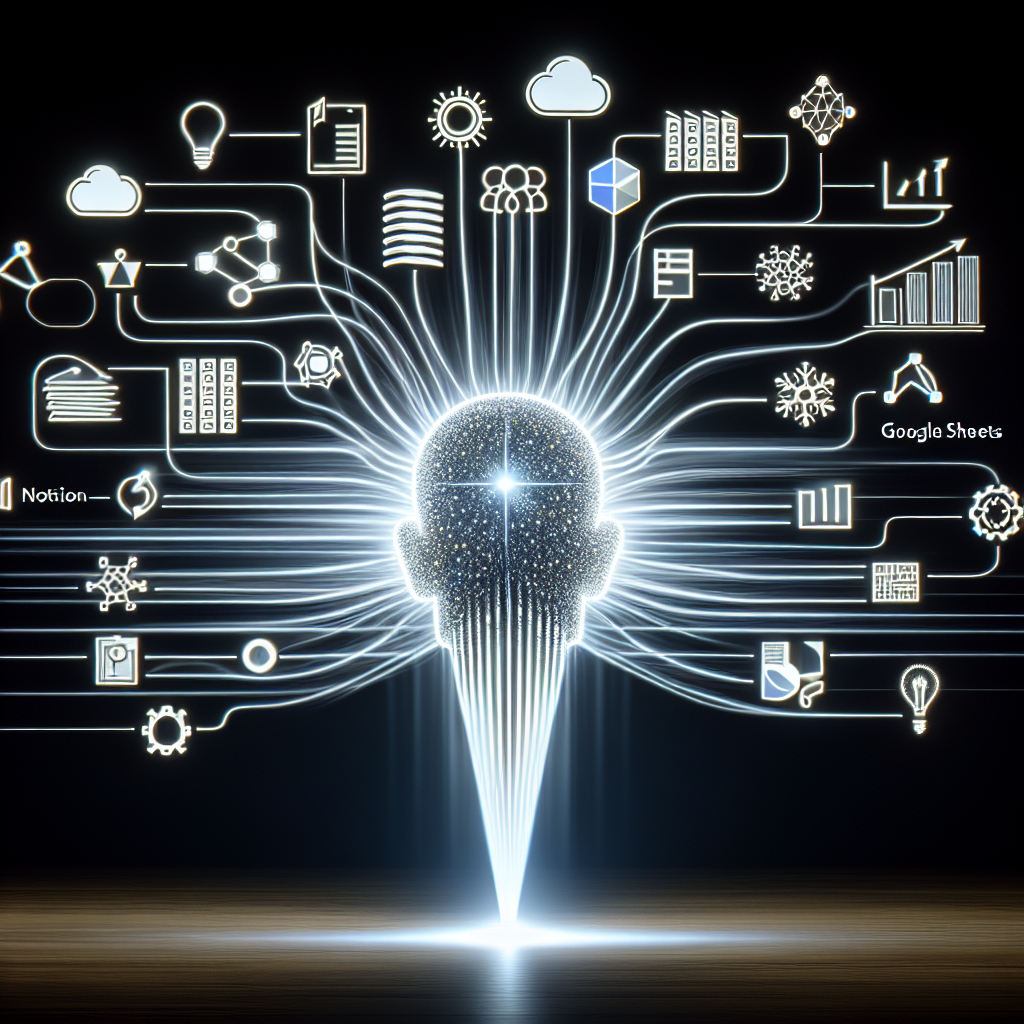Discover how dust.tt enhances their Query Tables agent tool, transitioning from simple CSV file handling to integrating with complex enterprise data warehouses. By enabling AI agents to perform quantitative analysis through SQL queries on structured data, a unified abstraction layer is established, making analysis accessible regardless of data source. This innovative approach includes expansion to various data platforms like Notion, Google Sheets, and Snowflake, bridging the gap for data-driven decision-making.
Building AI agents to query your spreadsheets and databases
The dust.tt’s journey to develop and enhance the Query Tables agent tool showcases the transition from handling simple CSV files to integrating with complex enterprise data warehouses. The key is enabling AI agents to perform quantitative analysis by executing SQL queries on structured data, making it usable for deeper analytical questions. The solution involves parsing data into an in-memory SQLite setup, using SQL queries for analysis, and expanding to connect with various data sources like Notion, Google Sheets, and enterprise platforms like Snowflake and BigQuery. The core idea is maintaining a unified abstraction layer that makes structured data analysis accessible regardless of the source.
Key Points
- Large language models are insufficient for quantitative analysis because they are optimized for unstructured text and lack computation capabilities.
- The Query Tables tool uses SQLite to quickly parse, query, and analyze CSV and other structured data types.
- A unified abstraction layer is key, allowing different data sources to be queried seamlessly with SQL, providing a consistent user experience.
Action Items
- Explore tools or techniques that convert unstructured data into structured formats to enable more effective quantitative analyses in professional projects.
- Adopt a similar approach of using a unified abstraction layer in personal data management systems to facilitate easier integration and analysis across different data sources.
- Consider learning or improving SQL skills to enhance the ability to perform data analysis, which can be advantageous in professional settings where data-driven decision-making is critical.
The Lost Art of Research as Leisure
The article by Mariam Mahmoud explores the notion of “research as leisure” and presents an argument for reviving the art of reading and research outside the confines of academia. It emphasizes reading and writing as fundamental cultural activities that carry civilization forward. By referencing various authors and philosophers, the piece suggests that leisure in contemplation and research can reshape our fragmented culture by fostering curiosity and intellectual engagement, promoting a balance between solitude and community. Through a structured framework for personal exploration, the article advocates for a shift towards intentional, deliberate inquiry as a way to rebuild cultural coherence and foster a sense of wonder.
Key Points
- Reading and writing are crucial cultural activities that shape and carry civilization, as emphasized by historical and contemporary thinkers.
- The modern shift towards fragmented attention and passive consumption challenges cultural coherence, foreshadowed by figures like Virginia Woolf, E.B. White, and Susan Sontag.
- Eliot and Pieper suggest that true culture requires both an external societal structure and an internal condition of contemplative leisure, or research as leisure.
Action Items
- Cultivate curiosity through deliberate observation and questioning of the world around you. Allow simple observations to evolve into deeper inquiries.
- Develop research questions that guide your exploration, knowing it’s normal to start with broad, imperfect questions and refine them over time.
- Engage in communities of knowledge where you can share your findings and participate in discussions, thereby adding to the collective cultural fabric.
The Hidden Ways Leaders Unintentionally Punish Their Top Performers
The article highlights how leaders can inadvertently push away top performers through subtle behaviors. The story of Judith, a high performer who left her company due to a lack of meaningful challenges, underscores the importance of recognizing how leadership actions (or inactions) can disenchant valuable employees. Five key behaviors to avoid are outlined: unclear vision, overloading without relieving past workloads, delegating without providing real autonomy, imposing more control after promising ownership, and misjudging employee motivations. The piece emphasizes maintaining open communication, offering genuine challenges, and understanding individual motivations to retain top talent.
Key Points
- Top performers leave not due to toxic leadership but due to boredom and lack of meaningful projects.
- Leaders may unintentionally overload high performers by adding tasks without removing others, risking burnout.
- Effective delegation requires trust and autonomy, not micromanagement or offloading dislikes.
Action Items
- Schedule regular, open discussions about the company’s vision and individual roles within it to ensure alignment and engagement.
- Adopt a ‘one in, one out’ policy when assigning tasks to maintain a manageable workload for high performers.
- Have direct conversations with top performers about their motivations and what excites them, and tailor their opportunities accordingly.
People as Files
The article explores the concept of maintaining a digital record of personal identity through a comprehensive file. It discusses integrating machine learning models to encapsulate details about one’s preferences, traits, and experiences. Using digital platforms to reflect personal insights results in both a deeper understanding of oneself and potential new challenges, such as digital dependency or loss of personal data. The author draws parallels between this digital evolution and Buddhist philosophies about impermanence and self-awareness.
Key Points
- The creation of a comprehensive digital file can provide a holistic view of one’s identity, merging personal data and insights from various sources.
- There is a psychological and emotional reliance on AI and digital systems to retain personal memory, akin to deeper human connections.
- The dynamic nature of digital identities aligns with the Buddhist concept of ‘non-self,’ reflecting ongoing change and impermanence.
Action Items
- Consider creating a personal digital file to document thoughts, insights, and data for reflection and personal growth.
- Use multiple platforms and backup systems like IPFS to prevent data loss and safeguard personal digital archives.
- Explore mindful practices from philosophies like Buddhism to balance digital dependency with personal introspection and acceptance of change.
